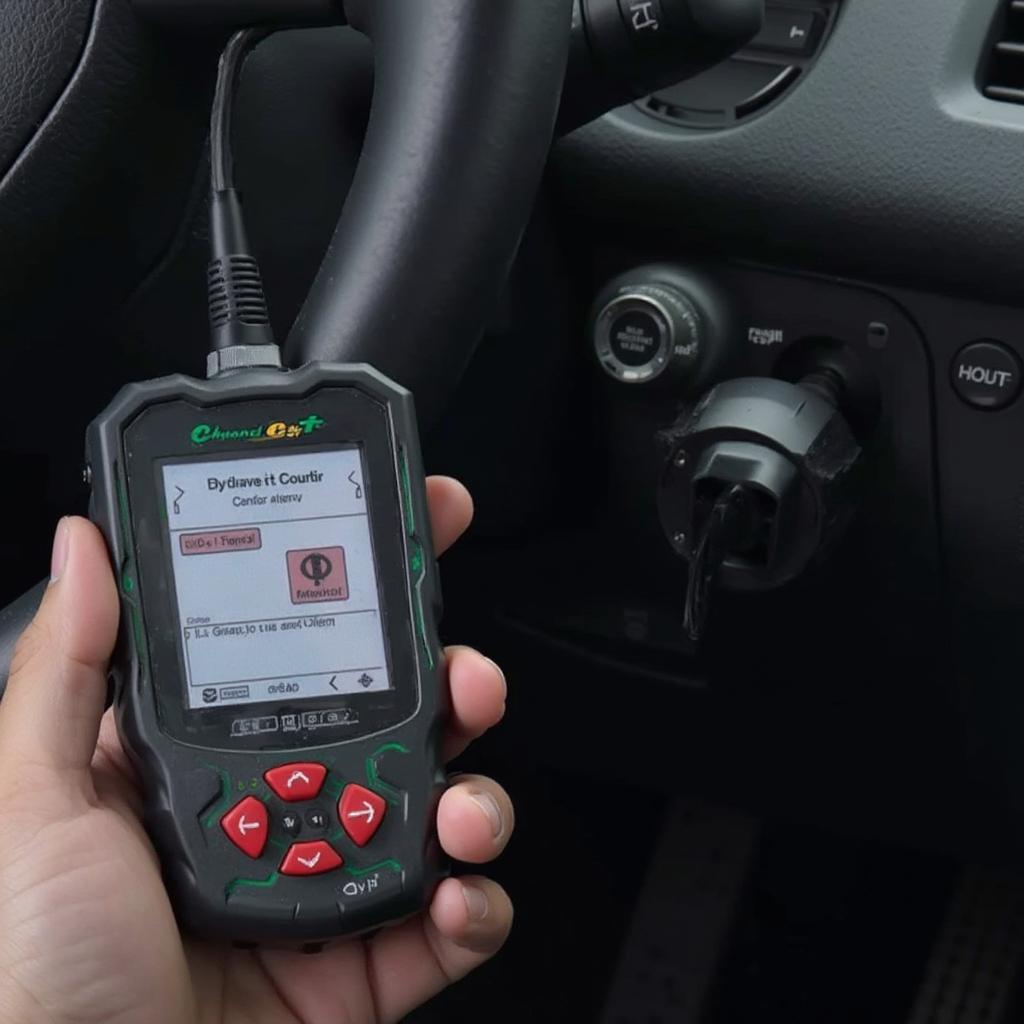Low end OBD2 scanners have become increasingly popular in recent years, offering a budget-friendly way for car owners to get a glimpse into their vehicle’s health. But with a lower price tag often comes limited functionality. So, what can you actually do with a low end OBD2 scanner?
Understanding the Basics: OBD2 Scanners and Your Car
Before diving into the capabilities of low end scanners, it’s important to understand the basics of OBD2 technology. OBD2, short for On-Board Diagnostics, is a standardized system present in most vehicles manufactured after 1996. It allows external devices, like OBD2 scanners, to communicate with your car’s computer and access valuable diagnostic information.
This information comes in the form of Diagnostic Trouble Codes (DTCs), which are essentially codes that indicate a specific issue within your car’s systems. Mechanics and experienced DIYers use these codes to diagnose problems, ranging from minor sensor malfunctions to more serious engine problems.
What Low End OBD2 Scanners Can Do
While low end OBD2 scanners might not boast the advanced features of their pricier counterparts, they can still prove to be surprisingly useful tools for car owners. Here’s a look at what you can typically expect from a low end scanner:
- Read and Clear Check Engine Light: This is the most basic function of any OBD2 scanner, and even low end models excel at it. They allow you to read the DTC triggering your check engine light and, in most cases, clear the code and the light itself.
- View Live Data Stream: Some low end scanners can display real-time data from your car’s sensors, such as engine RPM, coolant temperature, and oxygen sensor readings. This can be helpful for monitoring your engine’s performance and identifying potential issues.
- Check Emission Readiness Status: This feature helps determine if your car is ready to pass an emissions test.
- Basic Compatibility: Most low end scanners work with a wide range of car makes and models, adhering to the OBD2 standard.
Limitations of Low End OBD2 Scanners
While low end scanners offer considerable value for their price, it’s crucial to be aware of their limitations:
- Limited Code Definitions: Many low end scanners only display the generic DTC codes without providing detailed descriptions or potential causes.
- Inability to Access All Modules: Low end scanners often lack the capability to communicate with all of your car’s computer modules, like those controlling airbags, ABS, or transmission.
- Lack of Advanced Features: Don’t expect features like bi-directional control (sending commands to your car’s systems), graphing of live data, or data logging on a low end scanner.
When a Low End OBD2 Scanner Makes Sense
Low end OBD2 scanners are ideal for car owners who:
- Want to understand why their check engine light is on.
- Are comfortable researching DTC codes online to diagnose simple problems.
- Want a basic tool to monitor engine parameters.
- Are on a tight budget.
“For the average car owner, a low end OBD2 scanner can be a great investment,” says automotive expert John Smith. “It can save you trips to the mechanic for simple issues and give you a better understanding of your car’s health.”
When to Consider a More Advanced Option
If you’re a more experienced DIYer or need more in-depth diagnostic capabilities, consider investing in a mid-range or high-end OBD2 scanner. These scanners offer features like:
- Comprehensive code definitions and troubleshooting tips.
- Access to all vehicle modules.
- Live data graphing and logging.
- Bi-directional control for component testing.
Conclusion
Low end OBD2 scanners provide an affordable entry point into the world of car diagnostics. While their capabilities are limited, they can still be incredibly valuable tools for understanding and potentially resolving basic car problems. However, if you’re looking for advanced features and comprehensive diagnostic power, investing in a higher-end scanner is recommended.
FAQs about Low End OBD2 Scanners
1. Will a low end OBD2 scanner work on my car?
Most low end scanners work with vehicles manufactured after 1996 that comply with the OBD2 standard. However, it’s always a good idea to double-check compatibility with your specific make and model before purchasing.
2. Can I use a low end scanner to reset the oil light?
While some low end scanners might offer this function, it’s not always guaranteed. Refer to the user manual of the specific scanner to confirm.
3. Do I need to be a mechanic to use a low end OBD2 scanner?
Not at all! Low end scanners are designed to be user-friendly, even for those with limited automotive knowledge.
4. Can I use a low end OBD2 scanner with my smartphone?
Some low end scanners offer Bluetooth connectivity, allowing you to pair them with a smartphone app for additional features and a more convenient interface.
5. Where can I buy a low end OBD2 scanner?
Low end scanners are readily available online and at most auto parts stores.
Are you interested in exploring specific OBD2 scanners that can change tire size? Check out our article on low end obd2 scanner that can change tire size.
For more information on OBD2 scanners and their capabilities, explore other informative articles on our website, such as:
- Can an OBD2 scanner scan for ABS codes?
- Understanding obd2 p0128 and its implications.
- Locating the Opel Meriva obd2 location for diagnostics.
- Connecting your pc to obd2 for advanced analysis.
Need help choosing the right OBD2 scanner? Our team of experts is ready to assist you. Contact us via WhatsApp: +1(641)206-8880 or email us at [email protected]. We offer 24/7 customer support.


